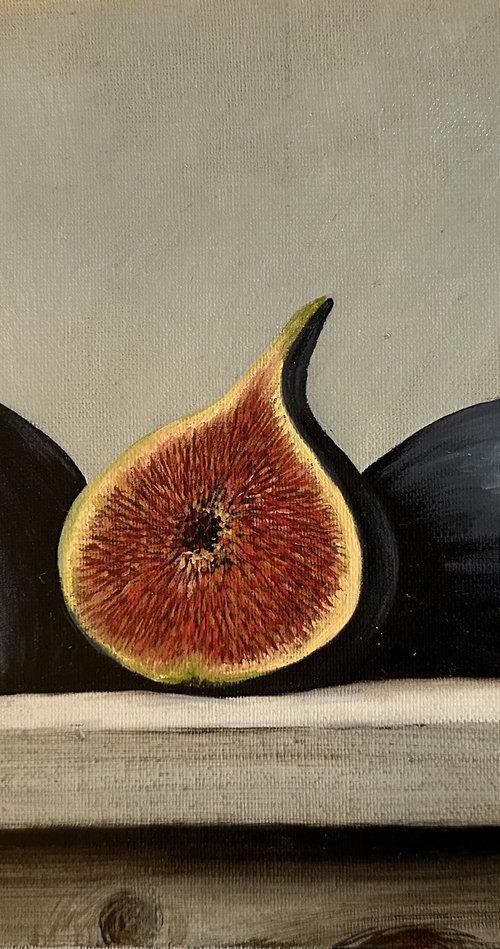Beautiful Handcrafted Oil Paintings for Sale from Studios
Discovering All About Oil Paintings: An Overview to Understanding Their Charm and Worth
Oil paints have astounded audiences for centuries, using a look into the creative proficiency of various ages. Their abundant background is linked with innovative methods and extensive emotional expression. Comprehending the products and techniques behind these artworks can improve recognition. In addition, the marketplace for oil paintings presents chances for collectors and financiers alike. As one discovers this fascinating globe, the concern occurs: what makes an oil painting absolutely useful?
The History of Oil Painting: A Journey Via Time
Oil painting has roots that date back to old times, it really grew during the Renaissance, when artists uncovered its convenience and rich shade capacity. Early examples can be mapped to the 7th century, with techniques advancing notably throughout cultures. The medium came to be famous in Northern Europe in the 15th century, specifically through the works of artists like Jan van Eyck, that spearheaded its use for thorough realistic look and vivid shades. This duration marked a departure from tempera paints, permitting better deepness and appearance. As oil painting spread, it affected plenty of artists, leading to work of arts by popular numbers such as Leonardo da Vinci and Rembrandt. The tool's tradition continues, shaping the art globe well into contemporary times.
Understanding Oil Repaints: Materials and Techniques
As musicians check out the world of oil paints, they run into a diverse range of materials and strategies that define this medium. The key components of oil paint include pigments, which supply shade, and drying oils, such as linseed, that bind the pigments and facilitate application. Various ingredients can customize the paint's structure and drying time, improving adaptability. Strategies like glazing, where clear layers are accumulated, and impasto, which involves using thick paint, enable for various aesthetic effects. Furthermore, making use of brushes, combination blades, and even fingers can create one-of-a-kind structures and surfaces. Recognizing these products and techniques allows artists to fully reveal their creative thinking and attain the wanted influence in their art work.
The Function of Color in Oil Paints
Color plays an essential function in oil paintings, influencing both aesthetic charm and emotional resonance. Understanding shade concept fundamentals, including the connections between hues, can boost a musician's capacity to convey state of mind and environment. Furthermore, grasping shade blending techniques enables higher deepness and richness in a paint's combination.

Color Concept Basics
Recognizing shade theory is vital for artists working with oil paints, as it develops the foundation for developing unified and visually appealing compositions. Color concept includes the research study of exactly how shades interact, the shade wheel, and the connections between main, second, and tertiary shades. Artists make use of corresponding shades to enhance contrasts and produce prime focus, while comparable colors promote unity and cohesiveness within a piece. In addition, the principles of great and cozy colors influence the assumption of deepness and area in a paint. Realizing these principles permits artists to manipulate shade effectively, directing the visitor's eye and connecting their designated message. Mastery of color theory eventually improves a musician's capacity to convey emotions and concepts through their job.
Psychological Effect of Shade
The psychological effect of shade in oil paints plays an important role in just how viewers link and regard with artwork. Colors evoke particular sensations and state of minds, influencing the audience's psychological state. Warm tones like oranges and reds can develop a sense of heat and power, while amazing tones such as blues and eco-friendlies typically evoke calmness or self-contemplation. Artists purposefully pick shade combinations to improve narrative elements, guiding the audience's emotional journey. The saturation and contrast of colors further intensify these impacts, drawing focus and creating emphasis. Inevitably, the interplay of colors in oil paints not only enhances their visual charm but additionally serves as a powerful tool for emotional expression, enhancing the audience's experience and analysis.
Shade Combining Techniques
While many facets of oil paint add to the total structure, grasping shade blending strategies is necessary for attaining preferred impacts and depth. Shade blending can be come close to with different methods, consisting of the subtractive and additive processes. Additive mixing includes combining colors of light, while subtractive blending counts on pigments, where shades blend to develop brand-new shades. Musicians commonly use a limited palette to develop harmonious works, understanding the relationships in between main, additional, and tertiary colors. Strategies such as glazing and scumbling further improve deepness and luminosity. By skillfully mixing shades, a musician can stimulate emotions, develop centerpieces, and accomplish a feeling of realistic look, inevitably elevating the painting's emotional and visual effect.
Famous Oil Painters and Their Iconic Functions

Famed for their proficiency of shade and method, oil painters have actually created a few of the most popular artworks in history. Popular artists like Vincent van Gogh mesmerized audiences with his emotive brushwork in "Starry Night," while Claude Monet's "Impact, Sunrise" prepared for Impressionism. Leonardo da Vinci's "Mona Lisa" remains a long-lasting symbol of imaginative genius, showcasing his skill in recording human expression. On the other hand, Rembrandt's "The Night Watch" highlights his innovative use light and darkness. Various other notable figures consist of Pablo Picasso, that transformed modern-day art with his bold experimentation in works like "Les Demoiselles d'Avignon," and Georgia O'Keeffe, whose vivid depictions of blossoms and landscapes helped define American innovation. Each musician's distinct design contributed substantially to the oil painting landscape.
Exactly how to Evaluate the Quality of an Oil Painting
Evaluating the quality of an oil painting entails a mindful analysis of workmanship strategies, in addition to an evaluation of shade and composition. Observing brushwork, layering, and the application of paint can expose the musician's ability level. Additionally, the interplay of colors and the total setup of elements contribute considerably to the painting's visual worth.
Examining Workmanship Techniques
A precise evaluation of workmanship techniques is vital for establishing the quality of an oil painting. Evaluators must initially examine the application of paint; thick, distinctive brushstrokes may recommend a knowledgeable hand, while excessively consistent applications might show an absence of depth. oil paintings for sale. The layering strategy is likewise important; the presence of glazes and varied density can enhance luminance and intricacy. In addition, the quality of the materials used, such as the canvas and pigments, plays a considerable duty in longevity and general visual. Attention to detail in elements like edges and changes in between colors mirrors the artist's commitment to their craft. Inevitably, these methods add to the painting's this link psychological impact and market worth, working as indications of the artist's ability and intent
Evaluating Color and Make-up
While evaluating the top quality of an oil paint, one should concentrate on the interaction of color and composition, as these elements are basic to the artwork's general influence. Color options can stimulate emotions and develop state of mind; therefore, the artist's scheme must be analyzed for harmony and comparison. A healthy composition guides the viewer's eye and produces a feeling of unity. Artists commonly employ methods like the rule of thirds or leading lines to improve visual rate of interest. Furthermore, making use of light and darkness can include deepness, improving the three-dimensionality of the paint. Ultimately, a successful oil paint weds shade and composition, engaging the visitor and inviting a much deeper recognition of the artist's vision and strategy.
Caring for and Preserving Oil Paintings
Correct treatment and preservation of oil paints is vital for maintaining their stability and durability. To shield these artworks, it is essential to display them far from direct sunshine, which can cause fading and staining. Maintaining a steady environment with controlled temperature and moisture further aids in stopping damage. Cleaning should be done delicately making use of a soft, completely dry cloth, avoiding any extreme chemicals that can harm the paint or varnish. Regular inspections for signs of deterioration, such as breaking or flaking, are recommended. When carrying or saving oil paintings, appropriate cushioning and framework are necessary to prevent physical damage. Eventually, attentive treatment adds to the aesthetic charm and worth of oil paints gradually.
The Market for Oil Paintings: Investing and collecting
Recognizing the market dynamics for oil paintings is necessary for enthusiasts and investors alike. The value of these artworks is influenced by different factors, consisting of the musician's track record, historic value, and existing trends. Collection agencies typically look for items that resonate personally while taking into consideration prospective appreciation in worth. Auctions and galleries work as primary places for check this site out trading, with prices varying based upon demand and rarity. Purchasing oil paintings needs research into the market, along with an understanding of authenticity and provenance. In addition, emerging artists may supply possibilities for considerable returns, while developed names can regulate high costs. Overall, a calculated approach to accumulating can generate both aesthetic satisfaction and financial benefits.

Often Asked Concerns
What Are the Ecological Influences of Oil Paint Products?
The ecological influences of oil painting materials include the launch of unpredictable natural substances (VOCs), harmful waste generation, and resource extraction for pigments. These factors contribute to pollution and ecological deterioration, elevating issues amongst ecologically conscious musicians and customers.
Just How Do Different Canvases Influence Oil Paint Outcomes?
Various canvases influence oil paint results substantially. Surface area, absorbency, and structure high quality can alter paint application, drying times, and color vibrancy. Artists frequently select certain canvases to achieve desired results and improve their creative expression.
Can Oil Paintings Be Recovered if Harmed?
Oil paintings oil paintings for sale can indeed be restored if harmed. Professional conservators make use of various strategies to repair rips, tidy surfaces, and address discoloration, guaranteeing that the art work maintains its original charm and value for future generations.
What Are the Indicators of an Initial Oil Painting?
The indicators of an original oil paint include noticeable brush strokes, appearance variants, and an uneven canvas weave (oil paintings for sale). Additionally, authenticity might be verified with provenance, signatures, and the presence of a varnish layer unique to oil tools
Just How Has Innovation Influenced Modern Oil Paint Techniques?
Modern technology has greatly affected contemporary oil painting strategies by introducing digital devices for planning, boosted materials for structure and longevity, and on-line platforms for offering and sharing art, therefore broadening musicians' innovative opportunities and audience get to. Oil paint has roots that date back to old times, it genuinely prospered during the Renaissance, when artists found its convenience and abundant shade potential. The emotional effect of color in oil paints plays an important duty in how visitors link and regard with art work. While numerous elements of oil paint contribute to the general make-up, mastering color blending strategies is important for accomplishing wanted effects and depth. Evaluating the high quality of an oil paint involves a cautious analysis of workmanship techniques, as well as an analysis of color and structure. While reviewing the quality of an oil painting, one need to concentrate on the interplay of color and structure, as these components are fundamental to the artwork's general influence.